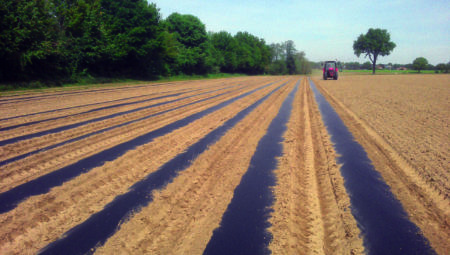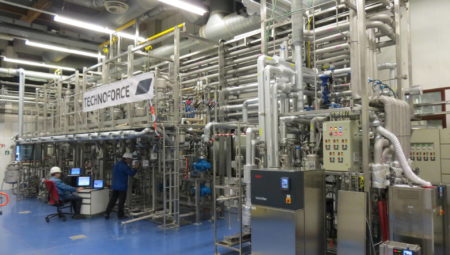The global demand for paper is decreasing and prices are dropping, a downward trend which has been apparent for years. Sappi also realises that the market for paper and pulp is changing fast.
The market leader in paper and pulp has therefore changed direction and turned its focus to innovation. The rise of biobased plays an important part in this. The change is certainly necessary, as the company acknowledges: ‘Our reaction to this new reality will determine whether we still lead the industry after 2020,’ can be read in the company’s vision of the future. Sappi (see box) was founded in South Africa in 1936. Today it has branches in South Africa, the United States and Western Europe. It claims to be the world’s largest producer of coated wood-free paper. It produces and supplies paper and pulp all over the world to customers in more than 100 countries. The company has factories in Europe in Finland, Germany, Belgium, Austria and the Netherlands.
Substantial ambitions
Sappi wants to reduce its dependence on traditional paper. Traditional printers and the clothing industry remain major markets and existing pulp and paper activities continue to grow; the future lies mainly in developing products derived from ‘plants and forests’: specialised cellulose, products from biorefinery and energy.
The ambitions are substantial: the total turnover has to grow to 1 billion dollars in 2020, compared with 650 million now. Growth must come especially from innovation. The company’s objective is to obtain around 40 percent of the revenue before deduction of interest and income from specialised cellulose.
The R&D budget will accordingly be directed more to the development and marketing of specialised paper, research into the possibilities of wood fibres and into biorefinery on micro and nano scales.
Listening to audio
What kinds of opportunities does Sappi see? Onderkant formulierSappi has listened carefully to the demand from the audiovisual market, for example. Sales of speakers and headphones are growing, thanks to the advent of wireless streaming services like Spotify.
Sappi believes in this growing market of stylish Bluetooth speakers and headphones, but also in specialised parts for housings, tweeter casings and speaker cones. The plastic injection moulding technique is currently used to make these products. That creates speakers with a stylish design but which have a ‘cheap’ appearance because of the plastic used. These speakers also only have mediocre acoustic characteristics. Speakers based on wood fibre like MDF with a wood veneer or a vinyl skin may sound better, but have the disadvantage of the extra expense required to make attractive and different designs.
Symbio
Sappi now claims it has the best of both worlds. It has developed a composite based on cellulose and polypropylene which it calls Symbio. The product is intended for standard injection moulding and extrusion processes. The use of fillers in plastic is already normal, but using these cellulose fibres instead of the traditional fillers reduces the weight by approximately 15 percent. Mixing 20 to 50 percent of the cellulose fibres with polypropylene increases the stiffness. The end product can be easily coloured and the fibres are not visible. It will be initially available with 20% and 40% cellulose content. Sappi sees further possibilities to use this technology for car interiors, furniture, consumer electronics and toys.
Pilot plant
The company has a long history in the Netherlands. The paper factory in Nijmegen was sold last year and has since been declared bankrupt by the new owner. There are still discussions about a restart, without Sappi. The Sappi production in Nijmegen was moved partly to Lanaken in Belgium. The paper factory in Maastricht is operational and Sappi is also making considerable investments in the Netherlands and in the biobased economy.
Sappi is building a pilot plant at the Brightlands Chemelot Campus for scaling up a new, energy-saving process to produce high-quality nanocellulose. Nanocellulose is booming: it is expected that demand will grow between 2020 and 2025 to 35 million tonnes per year. Sappi claims that it has developed a cheaper and better technology. With a diameter of 4 to 30 nanometres, the Sappi fibres are considerably smaller than the competition.
The product is as strong as Kevlar, as stiff as aluminium, and as transparent as glass. Its piezoelectric properties are similar to those of quartz. The process also requires less energy than the current technologies. No chemicals are used and there are no large waste water flows.
Positive market
But there does have to be sufficient demand. Reactions from the market are positive, as project leader and R&D director Math Jennekens explained earlier, although he did not want to divulge any more about the technology used. ‘People are impressed by the promising properties of nanocellulose and the building blocks derived from it. Everyone knows that they will play a key role in numerous high-quality materials and applications.’
Markets considered by Sappi include the automotive and aviation industries. Its specific properties make it highly suitable as a reinforced lightweight composite. An airplane made from nanocellulose-reinforced plastics weighs 5 to 10 percent less and thus consumes less fuel. Sappi also sees possibilities as a rheology substance in the drilling and concrete industry and as thickening agent in (water-based) paint and lacquer systems. A transparent milk bottle based totally on biomass also becomes a possibility due to the specific characteristics of nanocellulose in combination with other bioplastics. The healthcare sector will also get to know nanocellulose. The fibres’ strength means it can serve as an alternative for implants made from titanium.
The pilot plant is intended to be in full operation by the end of next year and produce 10,000 kg nanocellulose per year. If Sappi runs round-the-clock, 50,000 kg nanocellulose will leave the plant every year.



